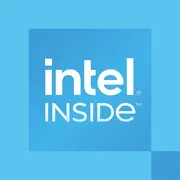Intel Processor N200

インテルプロセッサーN200: 基本的なタスクのためのコンパクトなエネルギー効率
2025年3月
インテルのNシリーズプロセッサーは、長年にわたり、バッテリー寿命と最小限の熱発生が重要な要素となる予算向けおよびポータブルデバイスのソリューションとして位置付けられています。2023年に登場したインテルプロセッサーN200は、この伝統を引き継ぎつつ、Alder Lake-Nアーキテクチャの改善を実現しています。この記事では、このCPUがどのようなユーザーに適しているのか、日常的なタスクをどのように処理するのか、2025年に購入する価値があるのかを見ていきます。
1. アーキテクチャとプロセス技術: 低消費電力チップの進化
コア、スレッド、キャッシュ
インテルN200プロセッサーは、ハイブリッドアーキテクチャのAlder Lake-Nを基にしていますが、上位モデルとは異なり、ここでは効率的なGracemontコアのみが使用されています(性能のPコアはなし)。構成は以下の通りです:
- 4コア / 4スレッド(ハイパースレッディングはサポートなし);
- ベースクロック: 1.0 GHz、最大ターボモードで3.7 GHz;
- L3キャッシュ: 6 MB。
インテル7プロセス(以前は10nm Enhanced SuperFinとして知られていた)は、性能と電力消費のバランスを提供します。
統合グラフィックス
内蔵GPUであるインテルUHDグラフィックス(24 EU)は、最大750 MHzで動作します。このソリューションは、2つの4Kディスプレイ@60Hzへの出力、H.265/VP9形式のビデオデコード、および軽いグラフィック負荷に適しています。DirectX 12およびOpenGL 4.5のサポートにより、シンプルなゲームを実行できますが、深刻な制限があります(パフォーマンスに関するセクションで詳しく説明します)。
2. TDP 6W: エネルギー消費と熱設計
6WのTDP(Thermal Design Power)は、N200をインテルラインアップの中で最も「冷たい」プロセッサーの一つにしています。これにより、以下が可能になります:
- パッシブ冷却(ファンなし)を使用でき、騒音と筐体の厚さを削減;
- 超薄型ノートパソコンやタブレットにCPUを搭載する;
- 小容量のバッテリー(40-50 Wh)でも高いバッテリー寿命を達成。
しかし、低いTDPは持続的な負荷における性能を制限します。アクティブなターボブースト時、システムは過熱のために周波数を下げることがあります。
3. パフォーマンス: 現実的な期待
オフィスタスクとマルチメディア
- オフィスアプリケーション(Word、Excel、10以上のタブのあるブラウザ): N200は遅延なしに処理します。PCMark 10のテストでは、約3500ポイントのスコアを記録 - ドキュメント作成やビデオ会議に十分なレベルです。
- 4Kビデオ: Quick Sync Videoを通じたハードウェアデコードにより、スムーズな再生を実現します。しかし、DaVinci Resolveなどのエディターでのレンダリングは非常に遅くなるため、クラウドサービスを利用する方が良いです。
ゲーム
内蔵グラフィックスUHDはプロセッサーの弱点です。ゲームでのパフォーマンス(低設定時):
- CS:GO(720p): 25-35 FPS;
- Fortnite(720p、パフォーマンスモード): 20-25 FPS;
- Stardew Valley、Minecraft(シェーダーなし): 60 FPS.
ターボブーストモードは一時的にCPUの周波数を3.7 GHzまで上げますが、ゲームではFPSにほとんど影響を与えず、GPUがボトルネックとなります。
4. 使用シナリオ: N200が適しているのは誰?
- 学生や生徒: 学習、文書作成、Zoomでの使用。
- オフィススタッフ: Lenovo IdeaPad 1やHP 15sなど、N200を搭載したノートパソコンは、しばしば$300-$400で入手でき、企業の購入にとってお得な選択肢となります。
- 「ソファで」使用するユーザー: ウェブサーフィン、Netflix/Youtubeのストリーミング。
- パッシブ冷却デバイス: 例えば、メディアセンター用のBeelink U59 ProのミニPC。
合わないユーザー: ゲーマー、エンジニア(CAD)、ビデオ編集者。
5. バッテリー寿命: 理想的な条件下で最大14時間
53 Whのバッテリー容量(Acer Aspire 3と同様)で、20%の負荷(ブラウジング、ビデオ視聴)で10-12時間の動作が可能です。省電力技術:
- インテルダイナミックチューニング: タスクに応じて自動的に電力を調整。
- C-ステート: アイドル時に未使用のコアをオフにする。
- OSエコモード: Windows 11の「推奨パフォーマンス」により、バッテリー寿命が15-20%延長されます。
6. 競合との比較
AMD Athlon Silver 7120U(Zen 2、2コア/2スレッド、15W TDP)
- N200はマルチスレッド性能(4 vs 2コア)とエネルギー効率で勝ります。
- ノートパソコンの価格は同程度($300-$450)。
Apple M1(8コア、10W TDP)
- M1はマルチタスクにおいて3-4倍の性能を持ちますが、デバイスはもっと高価です($700以上)。予算のWindowsノートパソコンと中古のMacBook Airの選択を比較する際に関連性があります。
インテルペンティアムゴールド7505(タイガーレイク、2コア/4スレッド、15W TDP)
- 古いアーキテクチャで、TDPは上回りますが、価格は似ています。N200は4コアのため、好ましい選択です。
7. インテルN200のメリットとデメリット
メリット:
- 記録的に低いエネルギー消費。
- 基本的なマルチタスクに十分なコア。
- 低価格のデバイス。
デメリット:
- ゲームやグラフィック作業に不向きな弱いGPU。
- プロフェッショナルプログラム(Photoshop、Blender)には適さない。
- 予算セグメントでのIPSディスプレイおよび高速SSDを搭載したノートパソコンの選択肢が限られる。
8. ノートパソコン選びのアドバイス
- デバイスタイプ: ウルトラブックと予算向けノートパソコン(ゲーミングではない)。例: ASUS Vivobook Go 15, Dell Inspiron 14 3420。
- 注目すべき点:
- 画面: 少なくとも1080pのIPSパネル(多くの予算モデルはまだTN 768pを使用している)。
- RAM: 8GB必須(2025年には4GBは厳しい)。
- ストレージ: SSD 256GB(NVMeがeMMCより好ましい)。
- ポート: 充電をサポートするUSB-C、プロジェクター用HDMI。
新モデルの価格: $320-$500。
9. 最終結論
インテルプロセッサーN200は、基本的なタスクと最大のバッテリー寿命を求める人々にとって良い選択です。AAAタイトルをプレイせず、ビデオ編集を行わない70%のユーザーのニーズを満たします。しかし、予算に余裕があれば、$200-$300の追加でインテルCore i3/UシリーズまたはAMD Ryzen 3 7320Uに目を向ける方が将来の性能の余裕を得られます。
2025年にN200に適している人:
- 子供のために初めてノートパソコンを購入する親。
- コミュニケーションとニュースの閲覧を目的とする高齢者。
- オフィステクノロジーでコスト削減を図る企業。
- 軽量性と長持ちするバッテリーを重視する旅行者。
これらの要望に合致する場合、N200は信頼できる経済的な相棒となるでしょう。
基本
CPUの仕様
メモリ仕様
GPUの仕様
その他
ソーシャルメディアで共有する
または当サイトへのリンクを追加
<a href="https://cputronic.com/ja/cpu/intel-processor-n200" target="_blank">Intel Processor N200</a>